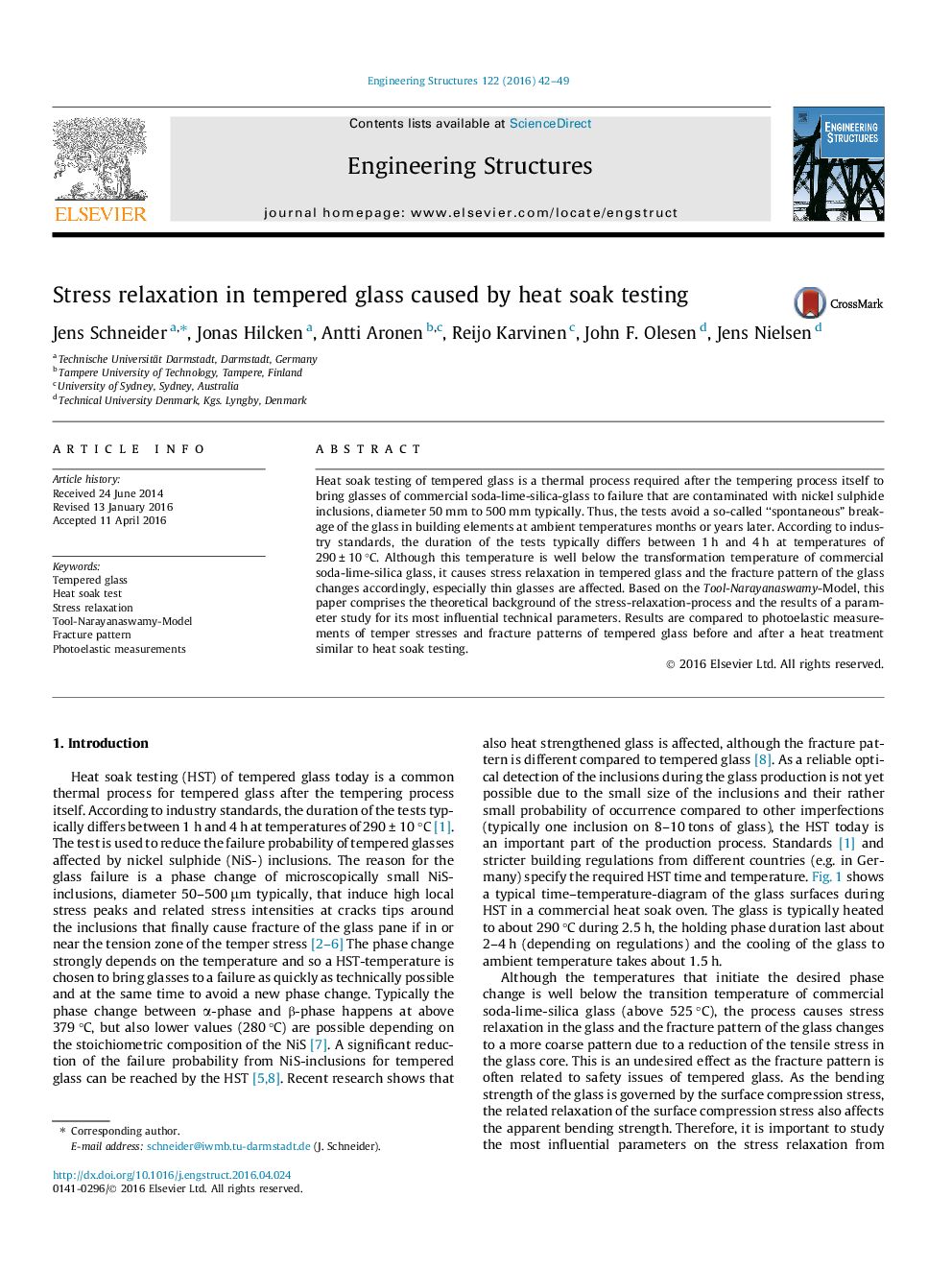| Article ID | Journal | Published Year | Pages | File Type |
|---|---|---|---|---|
| 6739861 | Engineering Structures | 2016 | 8 Pages |
Abstract
Heat soak testing of tempered glass is a thermal process required after the tempering process itself to bring glasses of commercial soda-lime-silica-glass to failure that are contaminated with nickel sulphide inclusions, diameter 50 mm to 500 mm typically. Thus, the tests avoid a so-called “spontaneous” breakage of the glass in building elements at ambient temperatures months or years later. According to industry standards, the duration of the tests typically differs between 1 h and 4 h at temperatures of 290 ± 10 °C. Although this temperature is well below the transformation temperature of commercial soda-lime-silica glass, it causes stress relaxation in tempered glass and the fracture pattern of the glass changes accordingly, especially thin glasses are affected. Based on the Tool-Narayanaswamy-Model, this paper comprises the theoretical background of the stress-relaxation-process and the results of a parameter study for its most influential technical parameters. Results are compared to photoelastic measurements of temper stresses and fracture patterns of tempered glass before and after a heat treatment similar to heat soak testing.
Related Topics
Physical Sciences and Engineering
Earth and Planetary Sciences
Geotechnical Engineering and Engineering Geology
Authors
Jens Schneider, Jonas Hilcken, Antti Aronen, Reijo Karvinen, John F. Olesen, Jens Nielsen,
